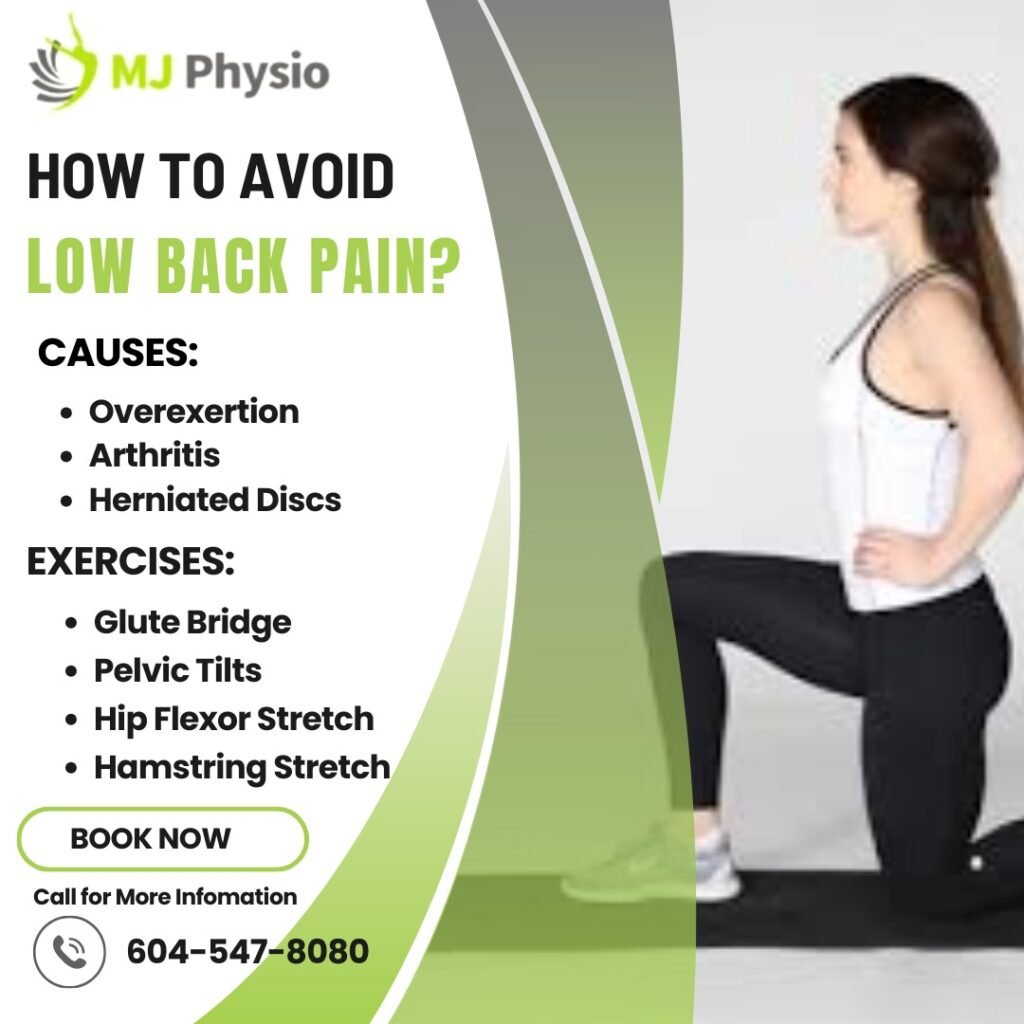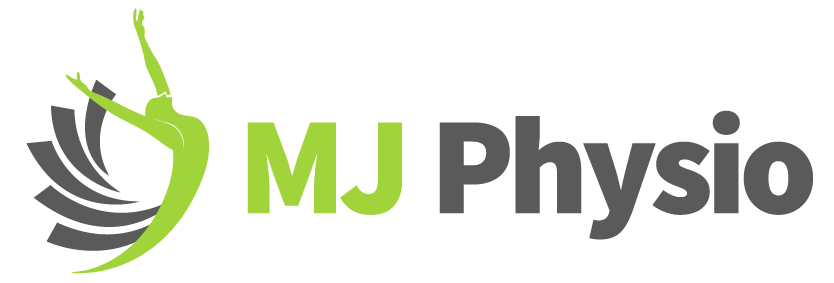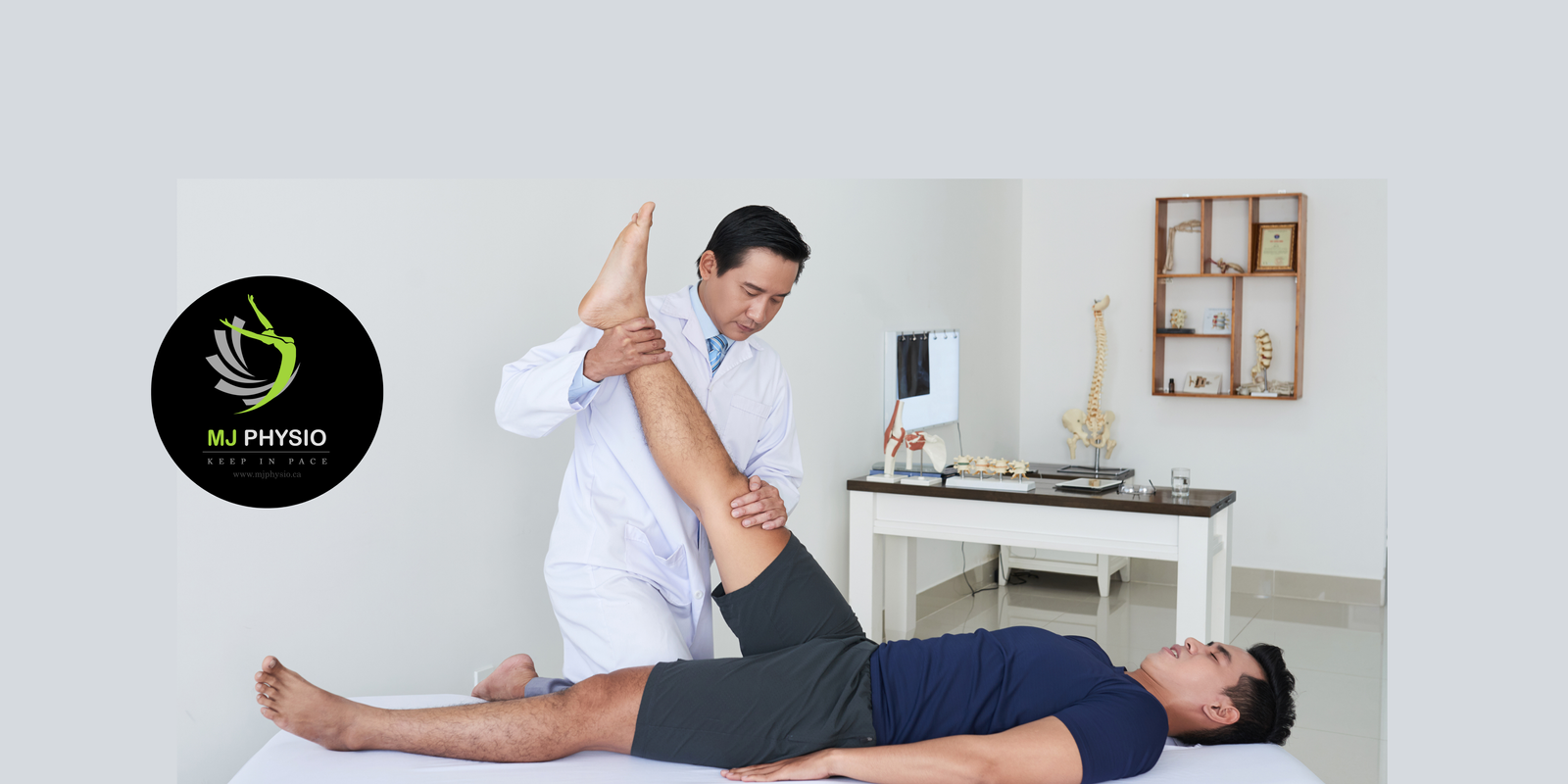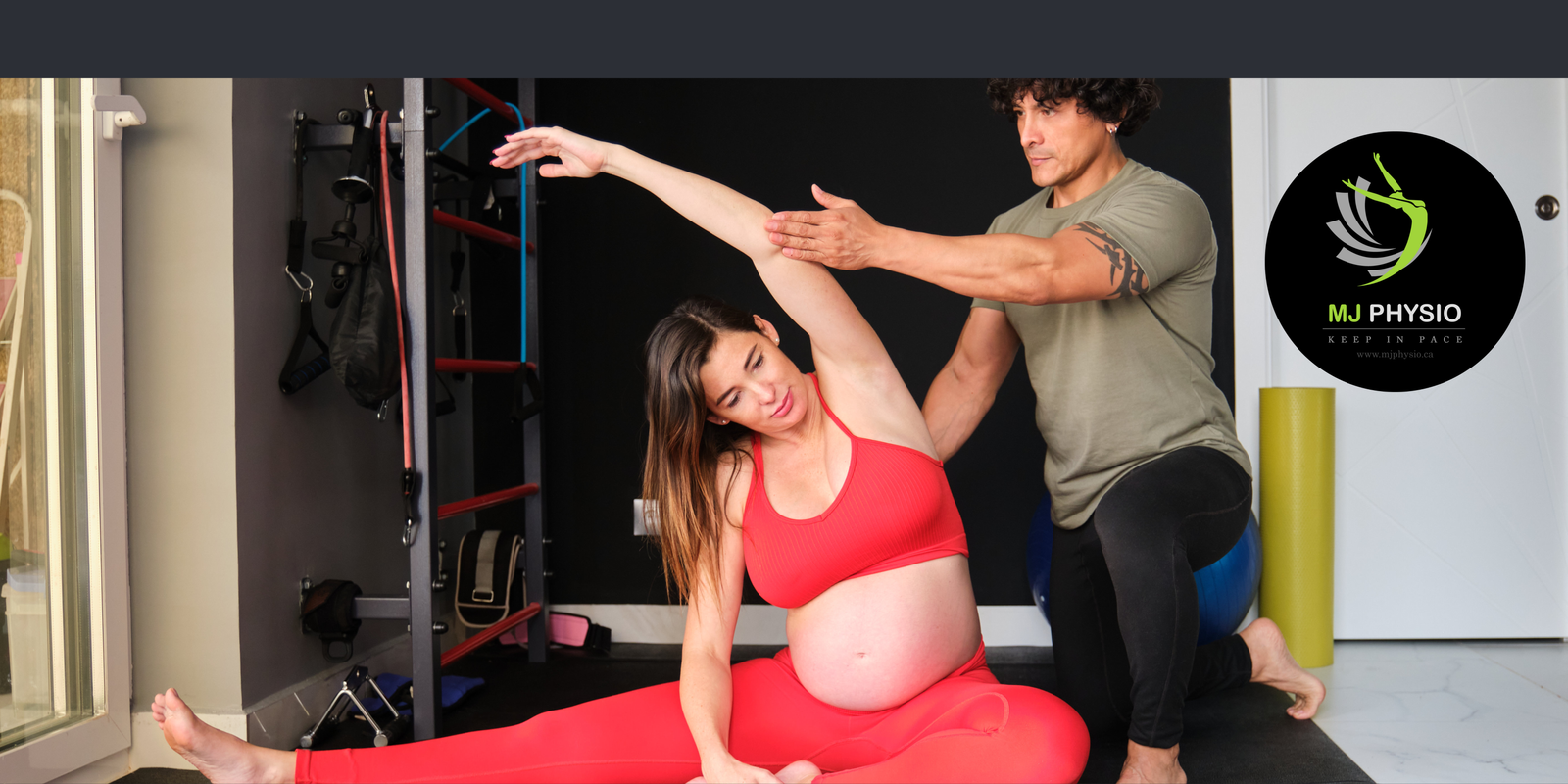Best exercises for low back pain
Low back pain is arguably one of the most frequent health concerns that affect people of all ages, and genders, who are alive, working, or with sedentary lifestyles. It can be a moderate steady pain all the time or sharp at some moments, which can limit the opportunities for movements. This blog highlights the need for healthcare providers and patients to understand what leads to and results from low back pain and the best exercises to do if you are struggling from a low back pain.
Some of the causes of low back pain include:

Muscle Strain and Ligament Sprain:
- Overexertion: Bending the spine backward to lift something heavy or any sudden movement may put pressure on muscles or ligaments, and thus cause pain.
- Repetitive Movements: Those movements that involve flexing or extending the spine or repeatedly lifting will make muscles get fatigued.
- Poor Posture: Posture when one is sitting or standing affects them over some time putting pressure on their back causing them to experience pain.
Disc Problems:
- Herniated Discs: This occurs when the soft tissue contained in a spinal disc bulges out through a rupture in the outer ring to exert pressure on nerves leading to pains.
- Degenerative Disc Disease: As people age, the discs found in the space between the bones of the vertebrae get flattened hence causing pain and discomfort.
Arthritis
- Osteoarthritis: This condition is characterized by the destruction of cartilage in the joints; joints in the lower back are not spared, thus resulting in pain.
- Spinal Stenosis: Pressure on the nerves can develop due to arthritic changes in the spinal canal that may narrow it.
Other Causes:
- Sciatica: The sciatic nerve can be compressed, leading to a shooting pain that begins at the lower back and travels to the legs.
- Spondylolisthesis: This happens when a vertebra in the spinal column is shifted off its proper position and this leads to lower back pain and instability.
- Osteoporosis: In osteoporosis, bones become fragile and can break easily or become compressed and cause pain in the spine.
Impact of Low Back Pain on Daily Life - Reduced Physical Activity: Chronic pain can make patients reduce their mobility which in turn results in muscle atrophy and increased injury.
- Mental Health Issues: It stated that chronic pain is associated with anxiety, depression, and stress which increases the pain one feels.
- Workplace Absenteeism: Low back pain is among the leading reasons for days off work, and this leads to loss of income and productivity.
- Sleep Disruption: Pain can disrupt sleep and cause tiredness crankiness and other related effects.
Preventing Low Back Pain
Lifestyle and exercise are crucial factors in the prevention of chronic diseases such as type 2 diabetes.
The most useful strategy to help prevent low back pain involves changes in habits and routines, as well as exercises that strengthen the muscles of the back and abdomen.
Lifestyle Modifications
1.Maintain a Healthy Weight:
Being overweight, particularly on the abdomen increases the load on the lower back. Consuming the right amount of food and engaging in physical activities to build muscles and bones are other valuable ways of avoiding back issues.
2. Practice Good Posture
Similarly, when sitting, standing, or lying down there should be correct orientation or alignment of the spinal column. Choose ergonomic furniture, adjust your workspace, and remember the correct body position during the workday.
3. Lift Objects Properly:
There is no situation where you should ever bend at the waist to pick something up; always bend at the knees. Do not lift the object away from the body, keep the knees slightly bent, and avoid moving the spine when lifting.
4. Stay Active:
This helps the muscles to become more effective by using them frequently thus reducing the cases of breakdown. Include aerobic, resistance, and flexibility exercises into your workout regime.
5. Avoid Prolonged Sitting:
Gentle movements such as getting up from the computer and stretching, smoothing down the hair, or reaching for something on a high shelf can all help to decrease the pressure on the back.
Exercises that can help you avoid lower back pain
1. Core Strengthening Exercises
A stable center on the body provides orientation and prevents lower back issues. These are exercises that aim at strengthening the abdominal, hip, and lower back musculature.
- Plank:
First, you lie flat on the belly then roll over to the prone position putting your palms on the floor and arching your body until your head touches the floor and your body forms a straight line with the legs. Wait for around 20-30 seconds, the duration should be increased as the person gains core strength. - Side Plank:
This exercise should be performed in a lying down position with the legs placed one on the other. Raise your body as much as possible using one forearm and the side of one of the feet. Keep for 20-30 seconds and if this is not comfortable, switch the position of the legs. - Bird-Dog:
You start for your hands and knees. With the back straight, spread one of the arms in front while the opposite leg is at the back. Do this for a few seconds, then come back to the beginning of the exercise and repeat on the opposite arm. - Dead Bug:
Stand beside the stability ball with your back toward it your arms raised above your head and your feet shoulder-width apart. Now, as the numbers return to one take a few extra moments and with control bring down one arm and the opposite leg to the ground while keeping your lower back flat on the ground. Return to the position at the beginning of the movement and do the exercise on the other side.
2. Flexibility Exercises
To avoid stiffness, and risk of injury in the spine and the related muscles, flexibility should be achieved in the spine.
- Child’s Pose:
Stand with your feet slightly formed apart, bend your knees move your buttocks down as low as you can, and place your arms forward, on the floor. Try to hold each position for 20 to 30 seconds as this will facilitate stretching of the lower back as well as hips. - Cat-Cow Stretch:
Begin on your four limbs or quadruped position. Round your back and flatten your spine, tuck your chin into your chest (Cat), then reverse it, let your abdomen expand, and raise your head and tail (Cow). Perform it 10-15 times for the flexibility of spine muscles.
- Hamstring Stretch:
Be seated in a V-shape with one leg pulled back to the glute and one leg stretched forward. Try to grab the toes of the extended leg with a straight back as a position. Wait for 20 to 30 seconds as much as possible while doing so, swap the legs you use. - Hip Flexor Stretch:
Stand as if praying with one leg flexed at the knee joint, the other leg placed forward with the knee bent at 90 degrees. There is the forward twisting movement during which you slightly thrust your hips forward while keeping your back straight. Do it for approximately 20-30 seconds and then you change your side.
3. Strengthening Exercises
Core muscles will also be developed to reduce low back pains as well as enhance proper posture.
- Glute Bridge:
Sit on the edge of a firm chair or bed with your back straight, and your upper thighs and lower legs and feet resting on the floor. Push your hips to the ceiling realizing that you are mainly working on your butt muscles. Wait for several seconds and then bring your hips back to the initial position. Repeat 10-15 times. - Superman:
Get in a prone position with your limbs spread out in front of the body. Bend your knees, pull your arms, chest, and legs up together, and maintain the position at the top, for a few seconds. If possible lower back down and repeat the process 10-15 times. - Pelvic Tilts:
Lithotomy position is preferred where you lie on your back with your knees bent, and feet placed on the floor. Very slowly push your lower back down towards the floor while at the same time engaging your belly muscles. Pause for a few moments; then let your muscles go limp. Repeat 10-15 times. - Lunges:
The position that you should take should involve your feet parallel to each other and a distance apart that is equal to the width of your hips. Walk forward using one leg and bend the knees to form an attitude of one hundred and eighty degrees. You can also extend your arms to the front, then push back to the initial position and perform it for the other side. Do 10-15 repetitions on each leg.
The Reduction of Low Back Pain and Yoga and Pilates :
- Yoga and Pilates work well in toning muscles around the abdomen and back, increasing flexibility, and decreasing stress and tension which are all beneficial for the spin.
Yoga Therapy for Non-Specific Low Back Pain
Yoga on the other hand pays attention to flexibility, strength, and balance and these are very vital for the back. Here are some yoga poses that can help prevent and alleviate low back pain:
- Here are some yoga poses that can help prevent and alleviate low back pain:
- Downward-Facing Dog:
The action of this pose benefits the hamstrings, calves, and spine, not forgetting the backache that we always experience. - Cobra Pose:
This is a gentle backbend, it helps to strengthen the spine, it also helps to open the chest which may help to relieve lower back pain. - Supine Twist:
Lying on your back, take a knee place it across your body, and twist through the spine. This pose gives relief to the lower back muscles thereby stretching them.
Pilates for Core Strength
Pilates focuses on the activation of the muscles of the belly and the back, control, and posture; these make Pilates a therapeutic modality for back problems. Some beneficial Pilates exercises include: Some beneficial Pilates exercises include:
- The Hundred:
This is one of the most fundamental Pilates exercises it works on the abs and improves the client’s stability. - Pelvic Curl:
Like the glute bridge, this exercise targets the glutes, and hamstring and decreases lower back problems. - Swimming:
Lay on your stomach and then exercise flailing the arms and the legs in the swimming style. This exercise tones the muscle groups of the back as well as the core abdominal groups.
- The Reliability and Continuity of Progress
The greatest strategy for preventing low back pain is to bear in mind that consistency is the key. Daily or every other day doing the exercises will help in strengthening the back’s muscles, flexing them, and increasing the endurance you have. But then it is good to start slowly to avoid meeting with an injury in the process. - Slow and Steady Increases the Gait
For beginners doing each of these exercises for the first time and people with back pain, it is recommended that one should exercise slowly and very carefully to avoid worsening the situation and slowly introduce the body to strength and flexibility exercises. Start with light exercises and increase the frequency and the exertion level that you place your body through. - Listen to Your Body
List yourself to specific signals of the body. If you feel any sort of discomfort in any exercise, then do not proceed to the next step and seek medical advice. The presentation of exercise also differs because not all exercises can be carried out by individuals with diseases. - Incorporate Variety
Frequency also refers to the idea that it is advisable to perform a range of exercises to avoid getting bored and to ensure adequate development of all muscle fibre types. For varied training, strength, flex, and cardiovascular exercises should be incorporated into back training.
When to Go to a Doctor - Nevertheless, it must be recognized that on certain occasions professional intervention is needed about low back pain and exercise is a practical method of prevention and handling of this problem. Seek medical attention if:
- Pain Persists: Continuing back pain beyond the few weeks or if there is a worsening of the pain, you should seek medical attention.
- Nerve Symptoms: Conditions like numbness, tingling, or weakness in the legs may be a result of a more severe condition like a slipped disk or Sciatica.
- Difficulty Moving: If you also develop problems with mobility, getting up, or sitting too: seek medical advice.
- Sudden, Severe Pain: This encompasses severe sharp pains in the back, multiple and rapid stabbing pain, burning pain in the back, or if the patient shows signs such as fever or weight loss.
Conclusion
Building the Foundation for a Healthy Back. Here are some of the prevention measures that can be employed; obesity, good posture, exercise, and physical activities and exercises thatstrengthen muscles of the abdomen and back. So, in this case, to avoid the development of low back pain problems, it would be required to change such factors as the diet and level of activity during the day and start practicing physical training constantly. Try to at least get through the basic diet, listen to what your body is telling you in terms of discomfort, and add only as much extra stress into the equation as your constitution will allow. For you to achieve this, it will be necessary for you to be consistent with it to build a strong and well-muscled back that will enable you to undertake all activities in your life.



